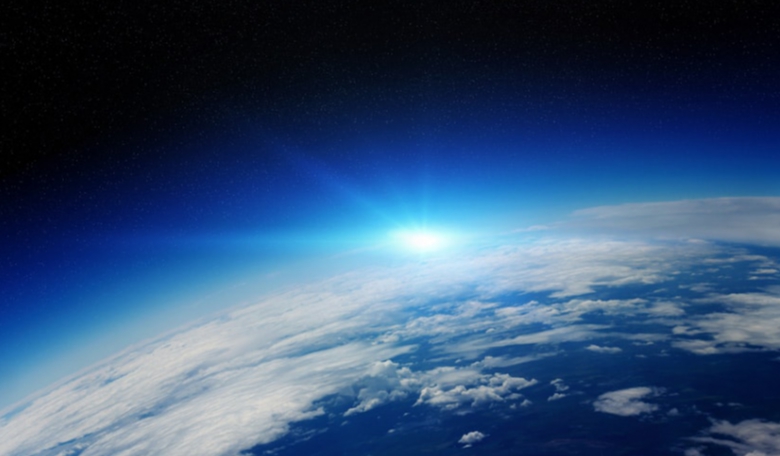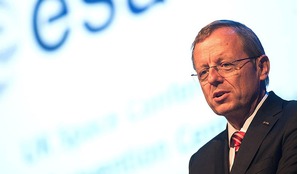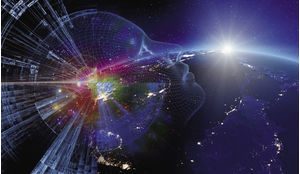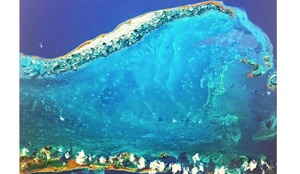Microorganisms are record-breakers when it comes to the longest period an organism has survived in space. They not only live on orbital stations but they develop, adapt to the space environment and are able to reproduce. The longer spacecraft operate the more bacteria and microscopic fungi appear and, according to Russian scientists, there are currently over 250 types of microorganism living in space.
As is well known, microorganisms are a unique life form. They’re characterised by unprecedented numbers and variations, ubiquity, extensive interaction with their environment and their ability to have a significant affect on the latter.
Microorganisms’ activity and their role in the circle of life on Earth is well-known. Their inter-relationships with animals and humans can be either mutually advantageous (mutualism) or parasitical, and sometimes take on the most negative form of all - infectious diseases, including the most dangerous ones on the planet.
They are incredibly resilient and malleable, and can be found in the most extreme environments. They can survive under conditions that prove lethal to other life forms - high and low temperatures, radiation doses that are deadly to humans, very little nutrition, etc.
The fact that microorganisms are capable of establishing residence in the material of an orbiting module is of critical importance
As such the ability of microorganisms to inhabit orbital space stations is practically limitless. The artificial environment that is created and maintained inside a spacecraft or space station presents optimal living conditions for humans, and is therefore even more comfortable for most known microorganisms, which are far less particular about their living conditions.
The source of microorganisms inside spacecraft can be either astronauts (including their epidermis and mucous membranes) or various cargo shipments - equipment, consumable materials, etc, that are regularly delivered by cargo and transport ships into orbit.
Obviously, this process cannot be completely avoided, as every time a person talks, coughs, exerts themselves physically, or even simply breathes, a significant number of microbes are emitted into the environment.
It is also impossible to fully sterilize all cargo and transport ships, including the cargo they deliver, even though much has been done to minimise transmission. Despite our best efforts, microorganisms continue to make it into space stations and spaceships.
So what are the possible consequences of this process as far as spaceflight safety is concerned? In reality, the situation is quite dire. First of all, in cases of a weakened immune system, some microorganisms that are usually benign may cause infections or allergies.
But there is another side to the problem - so-called microbial omnivory, which is the ability of such microorganisms to break down the most varied chemical compounds. Coming into contact with different materials, some microflora, most often bacterial and fungal combinations, adapt quickly to new environments and commence their vital life activities, which may include aggressive metabolic product emanation.
As a result, affected materials may change colour, and their mechanical resistance, pressurised sealing qualities, dielectric and other characteristics may become compromised. Most importantly, these processes could lead to the breakdown of equipment, which is unacceptable in working space stations.
The situation is exacerbated by the fact that in conditions lacking flow-through ventilation in enclosed spaces, air moisture may condense in certain spots that contain chemicals that microorganisms may feed on. A microorganism’s development may also be spurred on by physical factors of spaceflight - periodic fluctuations in solar activity, radiation levels, or magnetic field gradients, etc.
Russian orbital space station operational experience shows that processes like the growth of microorganisms can damage polymer-based construction materials. Metal bio-corrosion, the formation of biofilms and thrombus in the hydraulic water regeneration lines should be considered constant ecological risk factors.
Research on the issue of microbiological damage of construction materials began at the Medical and Biological Problems Institute of the Russian Academy of Sciences (MBPI RAS) back when Salyut 6 orbital station was in operation. The fifth main crew of the station discovered a white substance in some parts of the interior, on exercise equipment rods and some other parts of the living modules. Samples delivered back to Earth and studied were found to contain mould fungi - penicillium (black mould fungus) and aspergilli.
During the fifth main expedition to the Salyut 7 orbital station, a message was received from the cosmonauts about the discovery of visible mould in the interior, joints and cables of a work module.
Again, samples were collected and brought to Earth for investigation. Visual examination showed that 25 to 50 per cent of sample surfaces were covered with the mould mycelia. When examined under the microscope, changes in the samples’ structure were discovered, and some materials, particularly adhesive tape, had noticeable penetration defects.
The case of the navigational viewport on one of the Soyuz transport ships, that was used for six months at the Mir orbital station is of particular interest. During their mission, members of the third main crew observed an on-going reduction in the viewport’s optical characteristics.
Research was conducted once the transport vehicle came back to Earth, and the following was discovered: the central window and most of the viewport’s peripheral windows, which were made of heavy-duty quartz glass, as well as the enamel cover of the titanium rim, had evidence of mould mycelia, with one spot having a visible growing fungal colony.
Mycelia created an etching effect on the glass. Visually, it seemed that the source of the fungi was the paronite (rubber) seal that had been used to affix the glass to the titanium rim. A combination of microorganisms, including spore-forming bacteria and fungi were found in affected areas.
Another example of microbiological equipment damage is the breakdown of the control switchboard that was delivered back to Earth with the return of the 24th Mir mission. Actively growing mould was found under the metal cover of the mechanism, including on the conduit tubes, connectors, reinforced poly-urethane (Fig. 1). This process caused simultaneous corrosion of copper wires in areas where the insulation was damaged.
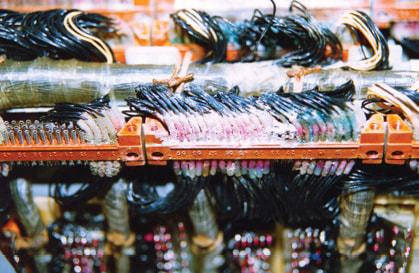 Fig 1: Mould growth on intercom apparatus, on the wire insulation.
Fig 1: Mould growth on intercom apparatus, on the wire insulation.
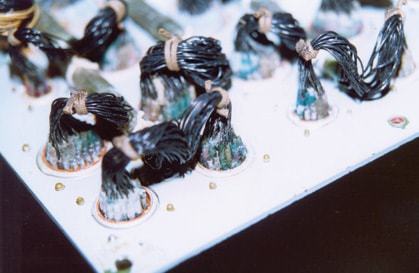 Fig 2: Mould growth on the intercom apparatus, on the wire insulation connectors.
Fig 2: Mould growth on the intercom apparatus, on the wire insulation connectors.
Other instances of microbiological equipment damage have also occurred during orbital station operations. Multiple malfunctions in the water regeneration system were noted - these were caused by gel-like thrombi that formed due to bacterial and fungal growths in the gaps between hydraulic lines, which were used to get condensation to the regeneration section of the mechanism.
A fire detector unit broke down at the International Space Station (ISS) because of bio-corrosion of the needle that received the electric charge (Fig. 3). Visible growth of mould was recorded by astronauts multiple times, especially on equipment located on the outer panels (Fig.4).
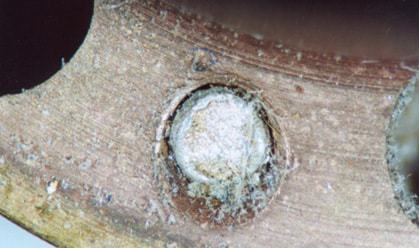
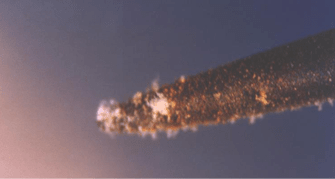 Fig 3: Mould growth on the fire suppression gauge - inside the casing and needle bio-corrosion
Fig 3: Mould growth on the fire suppression gauge - inside the casing and needle bio-corrosion
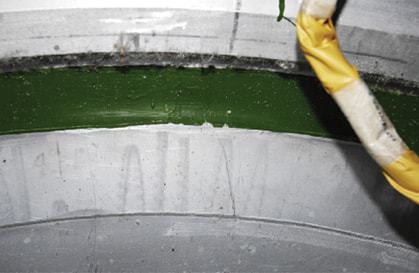 Fig 4: Fungal growth behind a service module panel.
Fig 4: Fungal growth behind a service module panel.
In some instances these processes were accompanies by damage to materials, including mould growth on aluminium, which led to its bio-corrosion and holes in the material (Fig. 5).
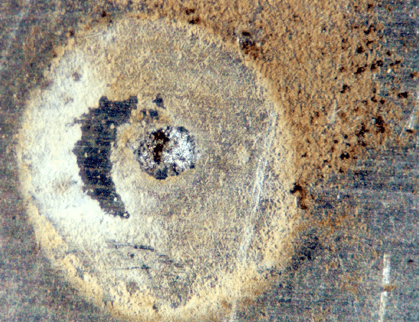 Fig 5: Microbiological damage on aluminium (appearance of holes).
Fig 5: Microbiological damage on aluminium (appearance of holes).
There are two main types of microorganism aggression in relation to construction materials: ‘direct influence’ (ie fermentative decay of materials as they’re used as a source of nutrition) and ‘indirect influence’ - growth on contaminated materials, with abjection of organic acids and other by-products.
The longer spacecraft operate the more bacteria and microscopic fungi appear
A good example of the latter is the damage to the heavy-duty quartz glass of an ISS viewing window. Of course the microorganisms did not use it for nutrition. They grew on the glass due to the lipid film, atmospheric moisture condensation and other contaminations, but at the same time, the secretions of their metabolic processes compromised the optical characteristics of the glass.
The fact that microorganisms are capable of establishing residence in the material of an orbiting module is of critical importance. Genetic research found the presence of this trait among a number of microorganisms taken from the Space Station’s interior and equipment during spaceflight. It was proven that Penicillium crysogenum fungi were constantly found in the interior of the Mir orbital station during the first 10 years of its operation, with certain fungal strains being the descendants of cultures found seven or eight years earlier.
Nevertheless, orbital space stations have been successfully operating for many years and the microbiological safety system developed by MBPI RAS plays an important part in this process. It includes, first and foremost, the constant screening and microbiological analysis of the air, the atmospheric moisture condensation, regenerated water, the surfaces of decorative and construction materials. In cases of even insignificant increase over the accepted microorganism norms, the crew is instructed to disinfect their environment. Cleaning and sanitation with vacuum cleaners and special antimicrobial wipes are conducted regularly onboard space stations, as is isolation and removal of waste with the use of cargo and transport ships.
The system cleans and disinfects the air by rendering microorganisms inactive with constant electric fields
The Potok 150 MK system has been used on the ISS since 2001 (and since 1995 on the Mir orbital station before it). The system cleans and disinfects the air by rendering microorganisms inactive with constant electric fields. This equipment is currently being used successfully on board the ISS in both the Russian Zvezda module and the American module - the functional cargo block. Using equipment with this technology in space medicine allowed astronauts to keep microorganisms in the air in a normal range for long-term spaceflights. Two Potok-150MK systems, which clean the air currents from aerosol particles and microorganisms, are turned on daily on the ISS (Fig. 6).
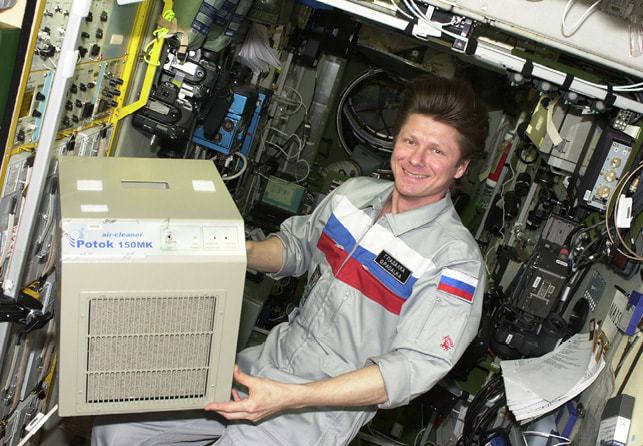 Fig 6: Installing the Potok-150MK air cleaner on the ISS.
Fig 6: Installing the Potok-150MK air cleaner on the ISS.
In order to prevent microbiological damage to construction materials and equipment, all materials are tested for their ability with withstand microorganisms prior to being used on space stations. Astronauts use special methodology to conduct periodic inspection of interior surfaces and station equipment, including outer panels. If suspicious areas are located, microflora samples are collected and the area is treated with a special chemical, Fungistat.
At the present time, MBPI RAS scientists are working on a number of applied solutions to increase the effectiveness of the current system of microbiological safety for piloted spaceflights. The most important of these are the development of methods that will ensure materials have antimicrobial properties created by surface modifications or antimicrobial film coating, and the creation of onboard instruments for early detection and diagnostics of microbiological damages. Solving these problems will create an advantageous ecological atmosphere on the International Space Station for a long time to come.
Natalia D. Novikova, PhD, Doctor of Biological Sciences, Academician of International Academy of Astronautics, Institute of Biomedical Problems of the Russian Academy of Sciences, Head of Laboratory of Environmental Microbiology and Antimicrobial Protection.
Elena A. Deshevaya, PhD, Institute of Biomedical Problems of the Russian Academy of Sciences, Leading Researcher in the field of mycology. Laboratory of Environmental Microbiology and Antimicrobial Protection.
Svetlana V. Poddubko, PhD, Institute of Biomedical Problems of the Russian Academy of Sciences, Leading Researcher Laboratory of Environmental Microbiology and Antimicrobial Protection.





